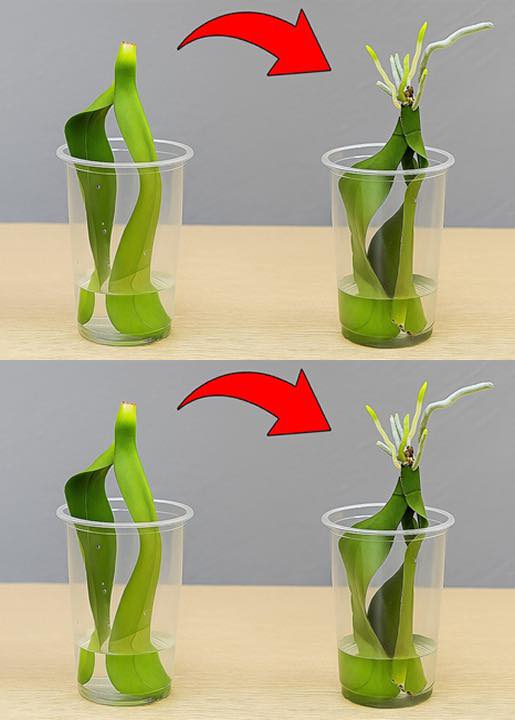Complete step-by-step guide to reviving orchids that look lifeless.
Orchids are enchanting plants, known for their exotic beauty and long-lasting flowers.
However, after the flowers fall, many people believe that the plant has reached the end of its cycle and end up discarding the pot.
The good news is that even when an orchid appears weakened, it can still recover — as long as some of its leaves or stem are green and firm.
With simple techniques and the use of natural ingredients that are usually available in the kitchen, it is possible to revitalize orchids with few or no healthy roots.
Next, learn a surprising method: it is possible to grow orchid leaves in water, even without roots, and stimulate the emergence of new, healthy roots.
In this guide, you will find a complete step-by-step guide to this process, ideal for revitalizing your orchids and promoting strong, long-lasting growth.
Remove all damaged roots
The first step is to carefully inspect the plant. Roots that are dry, wilted, dark or blackened should be removed completely.
In addition to no longer absorbing water, these roots can cause infections that compromise the rest of the plant.
It is also important to cut off parts of the stem that show gray, black coloring or signs of rot.
Wash the plant under running water
After pruning, wash the entire plant thoroughly — leaves, stem and base — under running water. This step helps to remove dirt, residue and possible pathogens.
Cleaning symbolically marks the orchid’s new beginning, free from traces of what weakened it.
Use lemon peel as a natural treatment
A natural and effective method to disinfect the plant involves using lemon peel.
Rich in essential oils with antifungal and antibacterial properties, it also acts as a natural insect repellent.
Simply remove all the pulp from the peel and place it in 500 ml of warm water. Leave to infuse until the water has cooled completely, then strain and discard the peels.
Using a clean cotton pad, apply the solution to the leaves, stem and base of the plant.
This treatment is gentle, effective and helps strengthen the orchid’s tissues during recovery.
Hydration and rest
After cleaning, the plant should rest for about 30 minutes.
Then, place it in a plastic cup with clean water, submerging only the leaves, with the base of the plant facing upwards.
This prevents the bottom from getting waterlogged, which could cause rot.
For protection, cover with another perforated glass, creating a humid and protected environment.
This improvised “greenhouse” provides the ideal conditions to stimulate the formation of new roots, even if none are present to begin with.
Stimulate rooting
Every couple of days, mist the base of the plant with water to maintain moisture and encourage root growth.
Over time, you will notice the first signs of recovery: small, shiny white roots emerging, followed by new, lush leaves.
Transplant to a new pot
After about three months, when the plant has well-developed roots and new leaves, it is time to replant it.
Use a transparent pot, which makes it easier to see the roots, and line the bottom with pieces of foam to ensure good drainage.
Add a layer of treated pine bark, gently place the plant in it and finish with moss on top.
Moss helps retain moisture and provides a more favorable environment for root growth.
Care after replanting
Once the orchid has been replanted, it is important to keep it in a well-lit place, but without direct exposure to sunlight.
Watering should be done carefully, whenever the roots begin to turn silver.
Constant observation of the plant is essential: monitoring the emergence of new leaves, roots or buds helps to adjust care as needed.
Final considerations
Orchids are resilient plants and, even in an apparently critical state, can be recovered with simple techniques and adequate care.
With the right amount of light, controlled humidity and a touch of natural care, such as using lemon peel, it is possible to transform a discouraged plant into a healthy specimen that will eventually flower again.
This type of care is more than a technical process — it is a gesture of patience and dedication that nature rewards with beauty and life.



